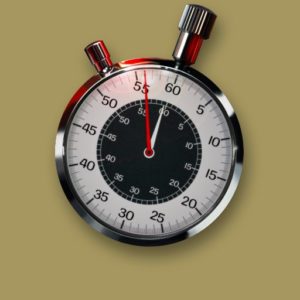In GYMNASTICS, time is not our friend. There are constant reminders through out warm up and competitions. Looking at time as a whole, it works against us. In college recruitment, in skills, on a path to elite. tic, tic, tic. Time only moves in one direction.
 Reality is that technology makes you impatient. It used to take months to get across North America. Now it is a pretty easy flight. Did the continent get smaller? No- we got faster. If you wrote to someone in Europe from USA it could take as much as a month for the letter to arrive. Today it takes a fraction of a second for an e-mail to make it anywhere in the world (or even up to the freaking space station!).
Reality is that technology makes you impatient. It used to take months to get across North America. Now it is a pretty easy flight. Did the continent get smaller? No- we got faster. If you wrote to someone in Europe from USA it could take as much as a month for the letter to arrive. Today it takes a fraction of a second for an e-mail to make it anywhere in the world (or even up to the freaking space station!).
In the gym, we view skills as “easy” because they are performed frequently. The double back on floor does not even raise an eyebrow unless is is tremendously HIGH or frighteningly LOW. Women must have been competing it for ever! Nope. Nellie Kim of the former USSR competed it at the Montreal Olympics in 1976 (An Olympics I was at as a 10yr old spectator). It was competed at other competitions (but not internationally) back in 1972. The Layout Yurchenko, also known as the “Level 9 compulsory vault” was first competed in 1982. In the grand scheme of things, these are pretty new skills. Are these skills done more frequently now because they are easier? Maybe yes, maybe no. Technology has made advancements in that Floors have gotten more springy and the vault table replaced the old horse. The innovations of numerous training aids like the Tumbl Trak and pits have allowed more attempts. Technically the skills have the same physical demands.
Looking at practices:
In a 45 minute rotation
At vault a gymnast, if they are VERY efficient, is going to take maybe 10 turns. Maybe 6 will be vaults that they are planning on competing.
Total time of work: 35 seconds. Counting return stations I will be generous and say 2 minutes.
At bars an efficient gymnast may do 5 routines plus a couple of parts.
Total time of work: 3.5 – 4.5 minutes.
At beam, 5-10 routines plus parts.
Total time of work: 12 minutes average .
At floor, 2 or 3 routines, plus extra passes and dance.
Total time of work: 7-9 minutes.
Warm up, conditioning and flexibility: Total time of work:
MAYBE 27 minutes (assuming the warm up run is about 12 minutes and flexibility is about 10 minutes)
In a 4 hour work out total time of work: MAYBE 50 minutes.
It gets WORSE when you think about competitions.
At a competition a gymnast is doing minimal amount of work. The focus is on quality, not quantity.
Vault: Total time of work: Maybe 30 seconds. Time of work in competition: 7 seconds
Bars: Total time of work: 2 minutes. Time of work in competition: 15-30 seconds
Beam: Total time of work: 3 minutes. Time of work in competition: 1.5 minutes
Floor: Total time of work: 2 minutes. Time of work in competition: 1.5 minutes
IF you were to compete EVERY weekend (not a good idea) a gymnast is spending on average :
3 hours on vault (8-10 minutes of work) for 7 seconds of competition.
3 hours on bars (16 minutes of work) for 30 seconds of competition
3 hours on beam (40 minutes of work) for 90 seconds of competition
3 hours on floor (28 minutes of work) for 90 seconds of competition.
We have a LOT of time that we spend in a practice NOT working. Are your gymnasts focused on what they did and the correction they need to make or are they thinking about what they are going to have for dinner?
In most gyms there is VERY little about what you can do to increase efficiency physically. Is there anything you can do to keep the gymnasts engaged mentally?
Time is NOT going to be your friend in the gym. You need to make sure you have a plan and a back up plan. Look not just at the big picture but also each event and side station.
I’d love to hear your ideas.




